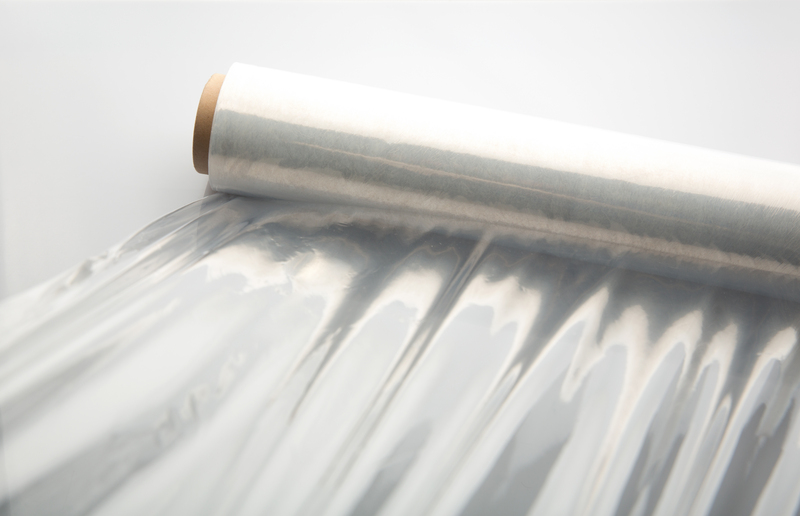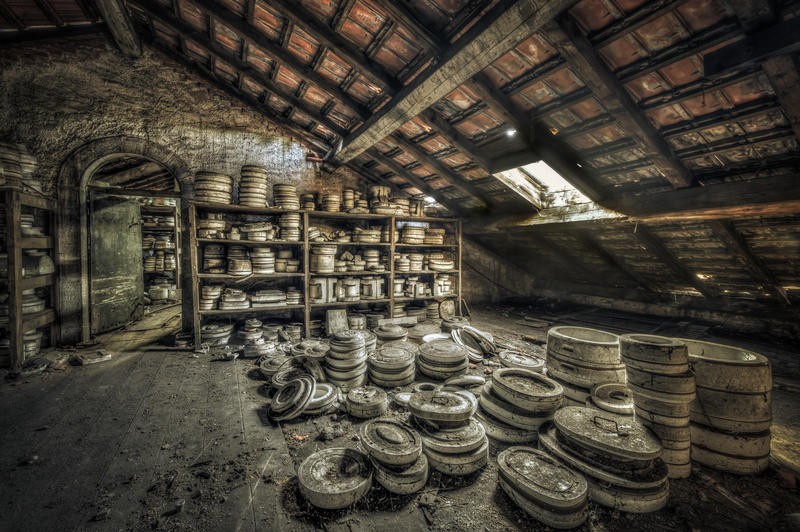Washing Velvet Curtains: Techniques for Keeping Them Flawless
Posted on 17/05/2025
Washing Velvet Curtains: Techniques for Keeping Them Flawless
Velvet curtains bring a sense of luxury, warmth, and sophistication to any living space. Their unique texture captures light and depth like no other fabric, making them a popular choice for those seeking elegance in interior decor. However, maintaining the pristine beauty of velvet curtains requires a gentle touch and specialized care. If you're looking for the best ways to wash velvet curtains and keep them flawless through the years, you've come to the right place. In this comprehensive guide, we'll unveil expert techniques, insider tips, and common mistakes to avoid for keeping your velvet window treatments looking their absolute best.

Why Velvet Curtains Need Special Care
Before we dive into how to wash velvet curtains, it's important to understand why this sumptuous fabric requires special attention. Velvet is distinguished by its pile--the soft, upright fibers that give it its signature plush feel and opulent sheen. This pile can easily be crushed, distorted, or discolored by improper cleaning methods.
- Sensitive Fiber Structure: Velvet is often crafted from delicate fibers such as silk, cotton, or high-quality synthetics.
- Easily Damaged Pile: The raised fibers are prone to flattening and matting if exposed to excessive moisture, heat, or agitation.
- Colorfastness Issues: Deep, rich colors may fade or bleed if washed incorrectly.
With these factors in mind, the correct velvet curtain cleaning techniques are crucial to preserve the look and feel of your textile investment.
Types of Velvet and Their Washing Requirements
Not all velvet drapes are created equal. Understanding the type of velvet you own will help determine the safest method for cleaning your curtains.
- Silk Velvet: Extremely delicate and luxurious--must be dry cleaned only.
- Cotton Velvet: Softer and a bit more robust, but still often recommended for dry cleaning unless the manufacturer suggests otherwise.
- Synthetic Velvet: Made from polyester or viscose blends; some varieties may be hand-washed or even machine washed on gentle cycles, but always check the label first.
- Crushed Velvet: Features a permanently "crushed" or textured appearance, slightly more resistant to pile damage, but still requires care.
Always consult the care label sewn into your curtains for the best guidance, as some manufacturers treat their velvet to be more washable than others.
Essential Supplies for Washing Velvet Curtains
- Vacuum cleaner with a soft brush attachment
- Mild detergent (preferably pH neutral and free of harsh chemicals)
- Soft, lint-free cloths or clean towels
- Large basin or bathtub (for hand washing)
- Steamer or iron with a steam setting (optional, for restoring pile)
- Hangers or drying rack
Step-by-Step Guide: How to Clean Velvet Curtains at Home
1. Regular Maintenance: Dusting and Vacuuming
Frequent maintenance can go a long way in keeping velvet curtains flawless, dramatically reducing the need for frequent washing.
- Weekly Dusting: Shake your curtains gently to dislodge dust. Avoid vigorous flapping that could crease or crimp the fabric.
- Vacuuming: Use a soft brush attachment and vacuum your curtains in the direction of the pile. Set your vacuum to a low suction to avoid pulling or stretching the fabric.
Tip: Avoid using lint rollers or sticky tape on velvet, as these can damage the fibers.
2. Spot Cleaning Velvet Curtains
Accidents happen, especially in homes with pets or children. Quick spot cleaning prevents stains from setting on your velvet drapes.
- Blot, Don't Rub: Gently blot any spills with a clean, dry cloth. Press lightly--never scrub, which can crush the pile or spread the stain.
- Diluted Detergent Solution: Mix a few drops of mild, pH-neutral detergent with cool water. Dampen a cloth with the solution and gently dab the stain. Rinse with a cloth dampened in clean water and blot dry.
- Dry Promptly: Use a cool fan or hair dryer in the lowest setting to dry the area. Never use high heat.
Test any cleaning solution on an inconspicuous area first!
3. Hand Washing Velvet Curtains
If your care tag states that hand washing velvet curtains is acceptable, follow this process for best results:
- Remove hooks, rings, and hardware from your curtains.
- Fill a clean bathtub or large basin with cool or lukewarm water.
- Add a small amount of mild detergent, mixing well to avoid concentrated spots.
- Submerge the velvet curtain and gently agitate with your hands for 2-3 minutes--do not wring or twist.
- Drain the soapy water and refill the tub with fresh water to rinse. Repeat until all soap is removed.
- Gently press out excess water by pressing the curtain against the side of the tub or between towels.
- Hang or lay flat to dry away from direct sunlight or heat sources.
Note: Never wring or twist velvet fabric, as this can permanently crush the pile and distort its shape.
4. Machine Washing Velvet Curtains: When (and How) to Try
Polyester or synthetic velvet curtains can sometimes be machine washed, but exercise extreme caution:
- Use a gentle (delicate) cycle only.
- Wash in cold water with a mild or specialized detergent.
- Place curtains in a mesh laundry bag to minimize friction and the risk of pulls.
- Wash curtains separately to avoid color bleeding from other items.
Important: If in doubt, always opt for hand washing or professional cleaning for valuable or sentimental velvet curtains.
5. Dry Cleaning Velvet Curtains
For many types of velvet--especially silk, cotton, and those labeled "dry clean only"--professional dry cleaning is the gold standard. This method:
- Protects the delicate pile from water and agitation damage
- Prevents color fading and shrinkage
- Offers thorough stain and dirt removal
Locate a reputable dry cleaner with experience in cleaning velvet drapery. Always inform them of any stains or issues beforehand.
Drying Velvet Curtains Correctly
The drying process is as crucial as washing when it comes to preventing velvet curtain damage:
- Never use a tumble dryer. High heat and vigorous tumbling can irreversibly crush the velvet pile.
- Hang curtains on a sturdy rod or drying rack in a well-ventilated area, ensuring even support to avoid stretching or misshaping the panels.
- Keep out of direct sunlight, which can fade the dye and weaken fabric fibers.
- Allow to air dry completely before rehanging and drawing the curtains.
- If laying flat to dry, use several clean towels to absorb moisture and protect the surface of the fabric.
Restoring Pile and Removing Wrinkles
After washing and drying, some velvet curtains may appear flattened or crumpled. Here's how to revive their rich appearance:
- Use a handheld steamer: Gently steam in the direction of the nap* while holding the nozzle a few centimeters from the fabric.
- Iron with care: If ironing is necessary, turn the curtain inside out and use the lowest heat setting with a pressing cloth between the iron and fabric. Never press directly on the pile.
*Nap: The direction in which the velvet pile naturally lays. Always work with the nap, not against it.
How Often Should You Wash Velvet Curtains?
Less is more. Frequent washing can prematurely wear velvet's signature softness and sheen. Instead, follow this schedule:
- Every 6-12 months: Deep clean or dry clean, unless more frequent washing is necessary due to heavy dust, smoke, or stains.
- Seasonally: Vacuum and spot clean to prevent buildup.
With regular light maintenance, washing velvet curtains becomes a rare necessity, helping preserve their flawless finish for years.
Common Mistakes to Avoid When Washing Velvet Curtains
- Ignoring Care Labels: Always check manufacturer instructions before attempting any cleaning method.
- Using Hot Water or Aggressive Detergents: Heat and harsh chemicals can shrink, fade, or damage velvet.
- Over-Soaking: Velvet absorbs water quickly but dries slowly--excessive soaking leads to mildew and pile distortion.
- Twisting or Wringing: This crushes the velvet pile and causes permanent creases.
- Drying in Direct Sunlight: UV rays rapidly degrade both color and fiber integrity.
- Ironing Directly on Velvet: The intense heat will flatten or scorch the pile.
Professional Velvet Curtain Cleaning: Is It Worth It?
For valuable or antique velvet curtains, or those with intricate lining and embellishments, professional cleaning is often the safest and most effective option. Expert cleaners use specialized equipment and solvents to safely remove grime without harming the fabric's delicate structure.
Additionally, professional cleaning can address:
- Stubborn stains and odors
- Heavily soiled or smoke-affected areas
- Large, unwieldy curtain panels that don't fit home washing facilities
Weigh the cost against the value and sentiment of your velvet window treatments--for irreplaceable items, professional care is a wise long-term investment.
Bonus Section: Storing Velvet Curtains Safely
If you swap out velvet drapes seasonally or need to store them for any reason, follow these best practices to keep them immaculate:
- Clean curtains thoroughly before storage.
- Fold along natural creases and wrap in a clean, cotton sheet (never plastic, which traps moisture and encourages mildew).
- Store in a cool, dry space away from direct sunlight and humidity.
- Consider adding silica gel packets or moisture absorbers to prevent dampness.
- Shake out and gently steam or brush when rehanging to revive the pile.

Frequently Asked Questions About Washing Velvet Curtains
Can all velvet curtains be washed at home?
No. Always defer to the care label. Silk and some cotton velvets require dry cleaning only, while some synthetics may be hand or delicately machine washed.
Will washing shrink my velvet curtains?
Improper washing or exposure to hot water can cause shrinkage. Use only cool or lukewarm water and follow gentle techniques.
How do I fix crushed velvet pile?
Lightly steaming can help fluff up crushed areas. For persistent issues, try gentle brushing with a soft clothing brush in the direction of the nap.
Conclusion: Keeping Velvet Curtains Flawless for Years to Come
With appropriate techniques and a little extra care, washing velvet curtains doesn't have to be daunting. By understanding your fabric type, preparing gently, and choosing the right cleaning methods, you'll keep your velvet drapes looking opulent and flawless--enhancing the beauty and luxury of your home for years. Remember: regular dusting and spot cleaning minimize the need for washing, and when in doubt, professional help ensures your velvet curtains remain as striking as the day they were hung.
Follow these velvet curtain cleaning tips and enjoy elegant, immaculate window treatments year after year!




